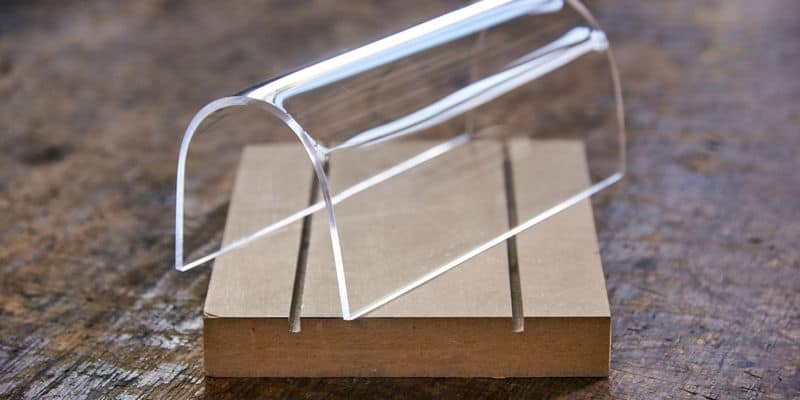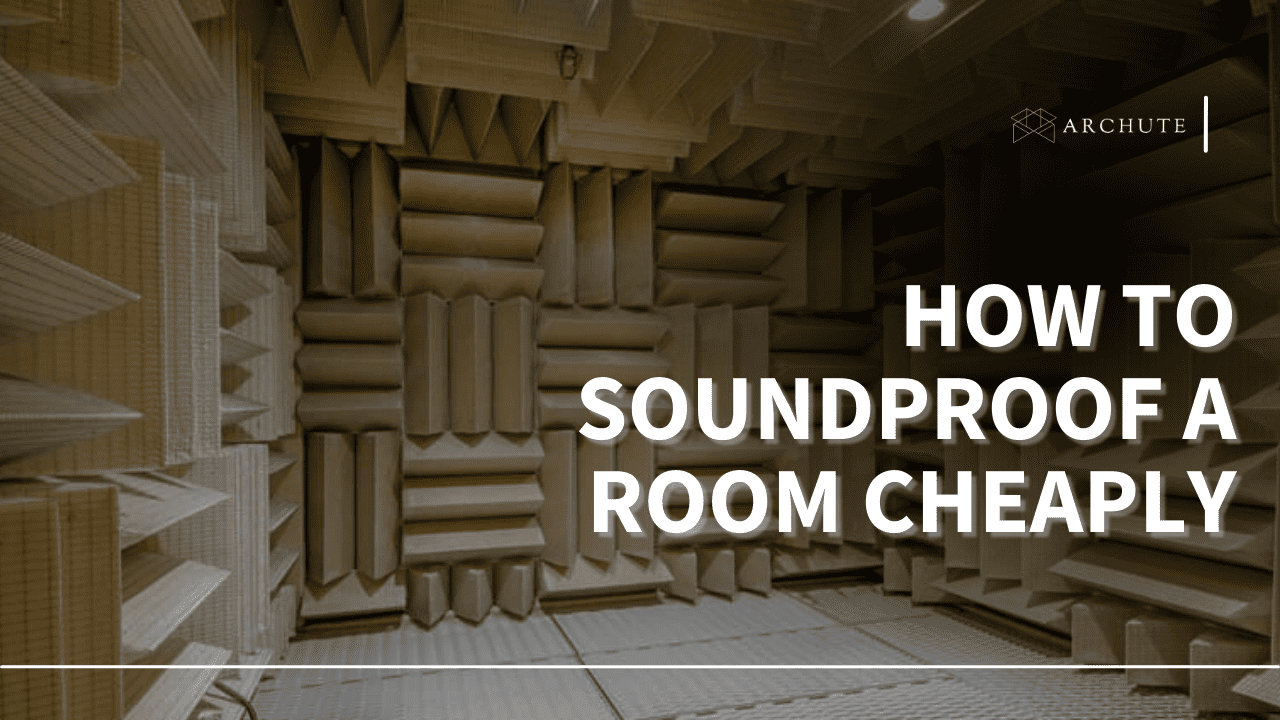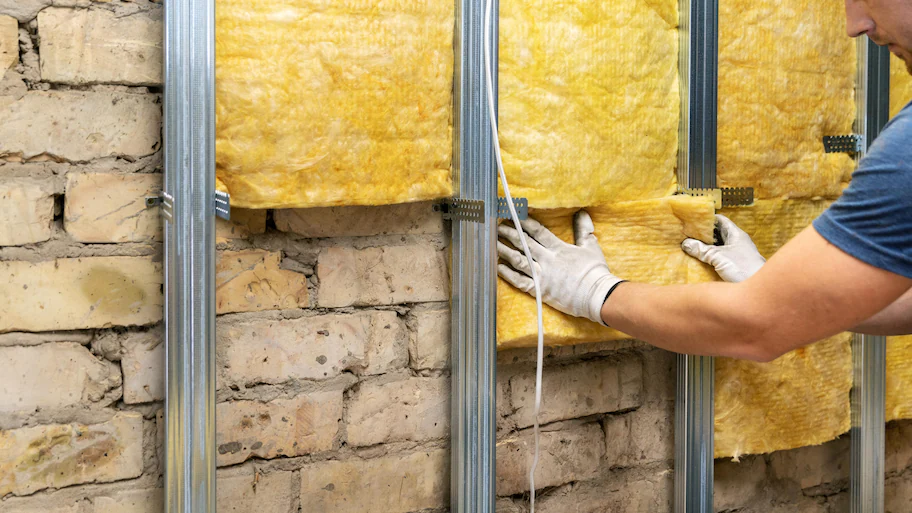Noise pollution is a common problem, and even though the obvious soundproofing solutions are soundproofing floors, ceilings, and doors, soundproofing doors are equally as important. Although noise might not be a problem in your home, you might be a musician and need to minimize the noise escaping your home, which is why it's important to learn how to soundproof a door.
Doors are a constant issue regarding keeping sound inside a room or preventing undesired sounds from entering a room. While closed doors effectively block off outside noise, small gaps between a door and its frame or threshold allow some sound to enter the room. There is no use in soundproofing the walls if the sound can still pass through the door.
This article will explain the 25 methods for soundproofing a door. Read on!
1. Install Door Gaskets

Image Credit: mrmisty.co.uk
A door gasket assists in preventing gaps from forming between the door and door frame. For a lasting, dependable seal, door gaskets are attached permanently to the top and sides of the door jamb.
They frequently contain high-quality neoprene, much like soundproofing rubber. Even though an adjustable door gasket is available, as doors occasionally warp or are not completely square, having the ability to customize your gasket's fit is a useful feature.
Door gaskets are a little more expensive than weather stripping, but they result in an all-around tighter seal. Door gasket installation needs just a little extra time and expertise as well.
2. Install a New Solid-Core Door

Image Credit: thequickdoorhanger.com
Most homes and apartments use hollow-core doors, one of the main reasons there is so much sound entering a room. However, the best solution for a hollow core door is to buy a solid core door.
Although a solid door is among the most expensive options, it guarantees you an improvement in sound reduction. Solid core doors are thick and heavy, perfect for soundproofing, so installing it will help by absorbing and dampening noise.
3. Add Drywall To Your Hollow-Core Door

Image Credit: hometheaterforum.com
If you lack the funds for a new solid core door, you can opt to improve the mass of your original hollow core door by attaching drywall. A drywall is a board constructed from soundproofing materials and is often used in interior construction.
Drywalls minimize the sound traveling through them. By attaching drywall to your current hollow door, you can significantly reduce the sound going through a door.
4. Use Meeting Stiles for Double Doors

Image Credit: firesealshop.com
Sound isolation could be difficult if your bathroom or bedroom has double doors. Meeting stiles, which serve as double seals, might be a useful way to protect doors whenever they come into contact with one another (for instance, an exterior door in a music studio).
Choose your desired size and fasten the screws where the door joins in installing meeting stiles. Except for their vertical orientation, they function similarly to door sweeps.
5. Install Soundproofing Composite Material

Image Credit: soniflex.com
Composite materials are yet another technique you can apply in your soundproofing project to block noise. For example, they may be positioned on floors or under doors, producing thick, dense sheets as a fantastic barrier against outside noise sources.
If the composite materials are used in a spot where the door has a gap, you can also apply them to the door. Alternatively, you can buy custom doors with composite sound insulation inside. Then, you can fasten it to the room door with a soundproofing system installed.
6. Install High-Density Soundproof Panels

Image Credit: soundproofexpert.com
It should be sound-absorbing foam panels if you want to attach anything directly to soundproof a door. Like a soundproof blanket, it is soft and dense but easier to cut through than soundproof curtains and blankets.
Most of these products are fiber-based, meaning you can easily cut through them, allowing the solid wood door handles to poke through. Cut pieces as wide as the solid wood doors, press them along the top edge, then peel off the backing while pressing on your panels.
Lastly, trim any excess, tape down the other sides, and move lower until you cover the whole door.
7. Reinforce Your Door With a Soundproof Blanket

Image Credit: aquietrefuge.com
Apart from using drywall, you can also use soundproof blankets to absorb sound coming from outside your door. Since the blanket is heavy and thick, it is suitable for dampening noise.
Soundproof blankets are fiberglass that is easy to install and absorb sound well. However, it's not an attractive method, and therefore, you may not want to use this method in rooms where you might have guests.
A hack would be to use hooks to hang the soundproof blanket on the door when necessary and take the blanket down if you have some visiting guests. This will give you ultimate flexibility and control when you want to use the soundproof blanket and is a perfect method if you aren't looking for a permanent solution.
8. Install an Automatic Door Bottom

Image Credit: alibaba.com
This type of door sweep incorporates a concealed flat-spring mechanism to control the sweep's movement. While the door is open, the sweep remains above the floor's level. However, the sweep drops to the floor when the door is closed to create a tight, soundproof seal.
9. Reinforce With Mass Loaded Vinyl (MLV)

Image Credit: audiolisted.com
Another way to soundproof doors is by attaching mass-loaded vinyl to them. MLVs can be bought from music stores or special acoustic shops since they are used in professional recording spaces. They come in thick vinyl rolls, which are cut to the door's size, and using a strong adhesive, the vinyl is attached to the door and given a few hours to dry.
Depending on the noise you want to block out, you can purchase material in different thicknesses. Mass-loaded vinyl panels can be useful in circumstances where functionality is important, but they don't necessarily improve the appearance of your door.
Although mass-loaded vinyl does a perfect job of sound reduction, it is quite expensive. The only problem is that it's black and heavy, so you'll need to figure out a decent way to attach it to the door. The easiest option would be to use nails, damaging the door. However, you can use this method if you don't care about the door itself.
10. Add Door Thresholds

Image Credit: wcmanet.org
Door thresholds include rubber protrusions made of neoprene, covering gaps at closed doors' bottoms. They are attached to the entryway's floor rather than the bottom of the door, in contrast to door sweeps.
Even the greatest automatic door sweep won't completely seal the door with carpet if you have a carpeted floor. Thus, you must have a threshold at the bottom of the doorway.
While some acoustic door thresholds are elevated and create a double seal with a door sweep for a closed door, others are flat.
11. Use Sound Absorbing Paint

Image Credit: soundproofpanda.com
Sound-absorbing paint is a special paint that absorbs soundwaves traveling through walls and can be found in most DIY stores. This paint is applied like normal paint, although it appears thicker once applied to the surface.
Depending on the noise pollution you are experiencing, the sound-absorbing paint can work as an effective solution. It will mostly work on mid-range frequencies like human voices.
It is among the soundproofing solutions that won't work well alone, but it could be used as a wider action plan for the door you are trying to block sound from.
12. Use a Sealing Rubber Tape to the Door’s Perimeter

Image Credit: joom.com
A sealing rubber tape is an inexpensive method for filling gaps around the door's edge, and it can be a perfect alternative to door gaskets and weatherstrips. The rubber tape is self-adhesive and is often used in wallboard installation, but it can also be used when trying to soundproof a door.
The sound isolation padding or rubber tape breaks the sound path, and it's affordable for minimizing sound transmission through gaps in door frames and walls.
13. Buy Area Rugs

Image Credit: countrydoor.com
This is a simple hack where if your home has a lot of hard-surface floors, you will use thick plush rugs and place them near your doorway. Instead of letting the noise bounce under or through your door, sound-absorbing area rugs will minimize the noise made by your doors, corridors, or other rooms.
14. Place a Fiberboard over your Door

Image Credit: homeefficiencyguide.com
The fiberboard material is similar to sound-insulating composite materials in that both can be placed inside the door's core and surrounding the door frame. Since fiberboard is less flexible than composite material, it has no bends.
The most effective way to use fiberboard is to use it for inside and outside doors or to wrap strips of it over edges and crevices. If possible, slide open the core door and place a piece of fiberboard.
15. Install Soundproof Curtains

Image Credit: residential-acoustics.com
Curtains are typically used for windows, but you may also place some next to your door to reduce noise.
Install a curtain rod over your doorway, then hang these curtains over the door. Then, when you want some silence, you can shut them up. Although this may seem like an odd suggestion, it helps to reduce noise before it reaches your room.
16. Install Soundproof Weatherstripping Door Kit

Image Credit: diy.dunnlumber.com
Weatherstripping, frequently used to block wind, rain, and other elements or debris is also effective in dampening sound. This is the perfect method for creating an airtight seal between your door and the frame.
Purchase an adhesive weather stripping soundproofing kit and stick it to the door frame's edges to seal off any easily visible openings.
To muffle the sound, close up gaps and create an airtight seal. This is an excellent low-cost soundproofing option because it is probably one of the least expensive solutions covered in this article.
17. Place a Rug Against the Door

Image Credit: spruce.com
If your house has mostly hard surfaces, place some thick, fluffy rugs next to the door. Rugs that absorb sound will dampen the noise made by your entrances, hallways, or other rooms rather than allow it to pass through or under your door.
Rugs can help reduce noise's impact by absorbing thick and heavy echoes. Although rugs are not as effective as other soundproofing measures, rugs will be helpful. Any amount is helpful, especially if you're on a tight budget.
To maximize the efficiency of the soundproofing, place a rug on either side of the door. Next, choose a sturdy runner that you can slide under the door. When sealing the bottom of the door, a runner will perform better than an awkwardly shaped rug.
18. Install a Soundproof Door Sweep

Image Credit: sawdustgirl.com
Door sweeps close the space between the door and the ground to absorb additional noise. A small crack is a major soundproof breach, and buying a door sweep will be convenient for door soundproofing.
This gadget is a piece of metal or plastic that you attach to the bottom of your door to close the gap created between the bottom of the door and your floor. How effective this is at keeping your room quiet will amaze you.
You might use a standard or a brush sweep, depending on the door.
19. Caulk All Gaps Around the Door Frame

Image Credit: todayshomeowner.com
Small cracks and gaps might be seen along the sides of your doorway if you look at it closely. These are insignificant gaps that weaken your soundproofing armor. Acoustic caulk or a gap filler sealant should be used to cover all small cracks that might have formed over the years between the wall and the door frame.
This method may work as a better alternative to weather stripping, or both methods may be used together. No matter how small the opening is, you must close it where the sealant will assist you.
20. Apply an Expanding Gap Foam

Image Credit: bobvilla.com
For soundproofing doors, gap foams can be useful. However, since the gap foam expands together with the foam, it becomes a major barrier to the inside of the house and the other rooms.
The foam gets more effective at reducing noise as it becomes thicker. For soundproofing doors, gap foams can be useful. Since the gap foam expands together with the foam, it becomes a major barrier to the inside of the house and the other rooms.
The foam gets more effective at reducing noise as it becomes thicker. The foam should be sprayed over the exterior doors first, then applied to the outer walls gradually while filling in any gaps.
Since many doorknobs have holes in the middle, they can be used in hollow doorknobs. Gap foam should be used after installing vinyl sheets, door sweeps, or other recommended solutions.
21. Use Acoustic Panels

Image Credit: soundproofguide.com
Acoustic door panels can be added if adding numerous soundproofing components to your door seems like too much labor. Although they are often less expensive than high-end options like fiberglass soundproofing blankets, these panels represent an improvement over just nailing a sheet of plywood to your door.
They are made of many materials, ranging from the most popular foam to solid wood.
Your door is successfully soundproofed by reducing the intensity of sound waves that travel through it. Acoustic door panels can be nailed to the door, or you can use adhesive strips to hold them in place without harming the door.
22. Use Rigid Foam Insulation or Styrofoam

Image Credit: Soma Kimya
Once you are sure you have hollow doors, your doors don't have the foam insulation that most solid core doors have in their core. So the best way to manage such a door soundproofing project is to do it while your existing door is horizontal.
However, if you don't want to soundproof a door by removing its hinges, you can still soundproof it while it's upright. Whatever the case, you should remove your doorknob before you attach the foam and ensure you cut the foam to size and create a cutout for the door handle.
Use styrofoam or thinner foam insulation, but these options may not be as effective for sound absorption. When you finish fixing insulation, attach it to a door with tacks, Velcro, or double-sided tape. When you finish, reinstall the door handle and put the soundproofed door back on its hinges if you removed it.
23. Fill Door With Sand

Image Credit: acousticgeometry.com
This alternative to soundproofing doors is neither very popular nor practical; to use this method correctly, you must prepare.
Because of its weight, it might not be easy to load the sand on top of a door. Despite this, the results are pleasantly surprising.
Notably, the door hinges should be durable and strong to provide the heavy sand door with the stability it needs. When a sand-filled door panel is installed properly, it minimizes noise.
24. Create Faux Built-Ins

Image Credit: brightgreendoor.com
Does your house have thin walls? A clever tactic to block noise outside the door is to add imitation built-ins from wall to wall. The plan is to give the partition more mass.
Massive things and materials resist vibration, which lessens sound transmission. Also, to prevent air gaps, another pathway for sound, ensure the built borders are tightly secured to the walls, floor, and ceiling.
25. Dampen The Noise On The Other Side

Image Credit: bobvilla.com
A doorway is nothing more than a sound path. It's not exactly where the noise is coming from. So one of the most important things you can do to soundproof doors is to muffle the noise coming from the opposite side of the entryway.
The main goal is to maximize the space in the room or hallway. First, identify the noise source, then try to silence it as much as possible. This will offer sound protection by minimizing the amount of noise coming into most doors.
Is Soundproofing Doors Necessary?
If you're considering undertaking a soundproofing project or process, you could question whether the door is worthwhile. After all, most of the room is made up of the walls, the ceiling, and the floor. However, you might be surprised to learn how much noise comes in through the door.
Below are some reasons why you should soundproof doors, and they include:
- A soundproof door is a great way to give yourself the needed silence when you have noisy neighbors.
- Soundproof doors are great for blocking noise if you are a noisy neighbor and you either blast music, play instruments or use your TV at top volume.
- A soundproof door will be beneficial if you work from home and need maximum concentration.
- A soundproof door might help to improve comfort, air quality, and humidity since it will help to keep out moisture and pollutants.
- Soundproof doors may help in temperature insulation since the soundproofing materials offer insulation from extreme temperatures.
Is Soundproofing Interior Doors the Same as Exterior Doors?

Image Credit: pathofex.com
Exterior and interior doors have different soundproofing challenges. Exterior doors have solid cores, meaning you won't have to worry about the sound that passes through them. In addition, they are thicker than interior doors and are insulated better from the start.
Interior doors offer a visual separation between rooms more than anything else. They will be more challenging, and you can use materials that are easy to obtain.
Everything going on an exterior door should be durable and waterproof to withstand any exposure to the elements. You can only use rubber door sweeps, soundproofing rubber, and weatherstripping tape.
How Much Does it Cost to Soundproof a Door?

Image Credit: soundproofcentral.com
Soundproofing a door will cost differently depending on the scope of work you need to do. Some products will cost a few dollars, while others will cost as high as a new phone. If you want to learn how to soundproof a door, you will need to know how much the methods cost to decide which one suits your budget.
For instance, removing a door and buying a new one will cost the most money, especially if you are trying to replace it with a solid core door.
If you choose to opt for the weatherstripping method or install a door sweep, it could cost you less than $20. On the other hand, soundproof blankets and curtains are affordable and could cost about $50. However, if you want to cover the whole interior door with fiber panels, you may have to spend up to $100.
Conclusion

Image Credit: flokq.com
Door soundproofing can be done in some ways so that you don't have to compromise on the style and look of your room. Many household objects could replace the professional soundproofing equipment, so you won't need to worry about your budget.
However, if you are looking for perfect soundproofing results, you will need to soundproof a door with one of the above ways.
Image Credit: Commercial acoustics















